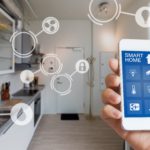 For most of the time humans have been living in specific accommodation, there has been little need for communication between us and our abode. As buildings become smart however, that is beginning to change. New research from the University of Southern California (USC) highlights how the way this communication takes place has a significant impact on how we behave, and in particular the environmental impact of our actions.
For most of the time humans have been living in specific accommodation, there has been little need for communication between us and our abode. As buildings become smart however, that is beginning to change. New research from the University of Southern California (USC) highlights how the way this communication takes place has a significant impact on how we behave, and in particular the environmental impact of our actions.
The researchers explain that we spend the vast majority of our time indoors, and that buildings account for around 40% of the carbon dioxide emissions pumped into the atmosphere. There is a strong desire, both from the public themselves and from legislators for this number to be significantly reduced. Changes in how we behave could go a long way towards achieving that reduction.
Smarter buildings
As with so many new technologies, there has been considerable hype surrounding the introduction of smart building technologies, but despite some impressive features, they haven’t yet made much of an impact on the way we behave in them. This is where the authors believe better communication can come in.
“If a building spoke to you, it could ask for things that might help the environment, like ‘turn off lights’ or ‘open windows’ or ‘save energy,'” they explain. “If the building were to ask people, ‘Why don’t you do something environmentally-friendly?,’ we might get people to engage in healthy behaviors for themselves and the environment.”
The researchers gathered a group of 200 volunteers and exposed them to a virtual reality office environment. A smaller group were then put through a similar experience but in a real office. Each environment had various pro-environmental messages programmed into a virtual assistant, so it could nudge users towards more eco-friendly behaviors.
Nudging behavior
The results showed that people tend to modify their behavior most of all when the virtual assistant appeared to speak on behalf of the building manager rather than as some kind of personification of the building itself.
What’s more, people tended to react most favorably when the communication was in the form of a dialogue rather than a monologue. This included the use of small talk to help build a rapport between the virtual assistant and the user. The researchers believe we have an inherent bias against the technology, but that such small talk can help to overcome this.
“Including a social dialog may have helped to overcome the difference between personas by making the building persona more relatable. Indeed, people associate monologue with strangers and dialog with closer relationships,” the authors say.
Interestingly, similar results emerged regardless of whether the volunteers were in the real or virtual environments, suggesting it has a degree of legs. What’s more, when the experiment was repeated a week later, the volunteers were even more enthusiastic, which suggests that a degree of familiarity can improve the communication still further.
“We are trying to build a relationship between buildings and their users, akin to a friendship, so users are empowered to improve individual performance as well as building performance,” the researchers conclude.